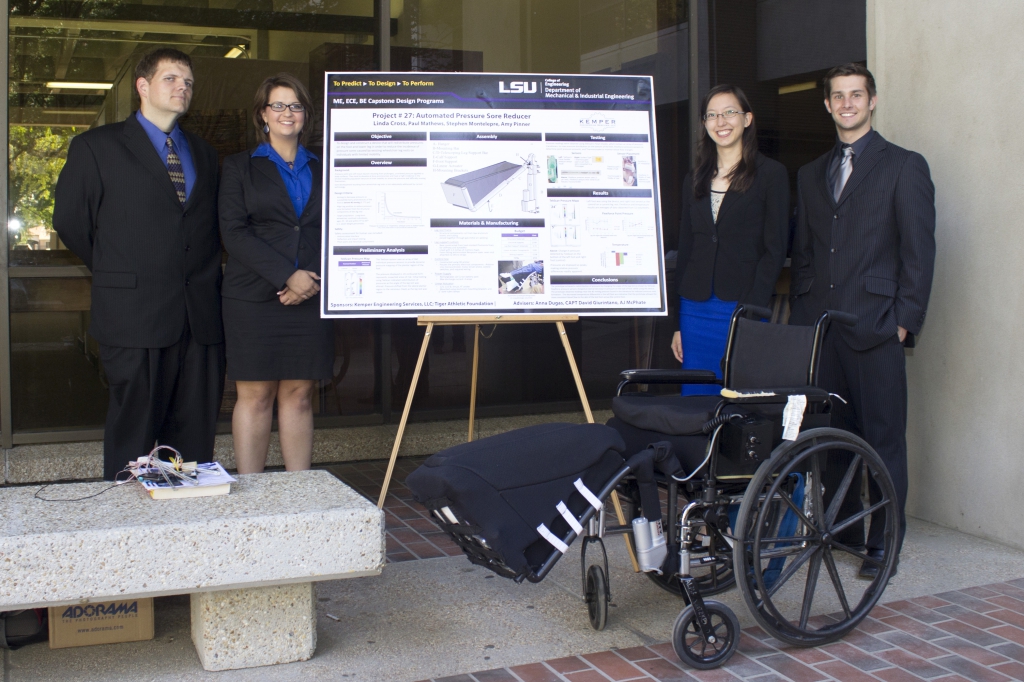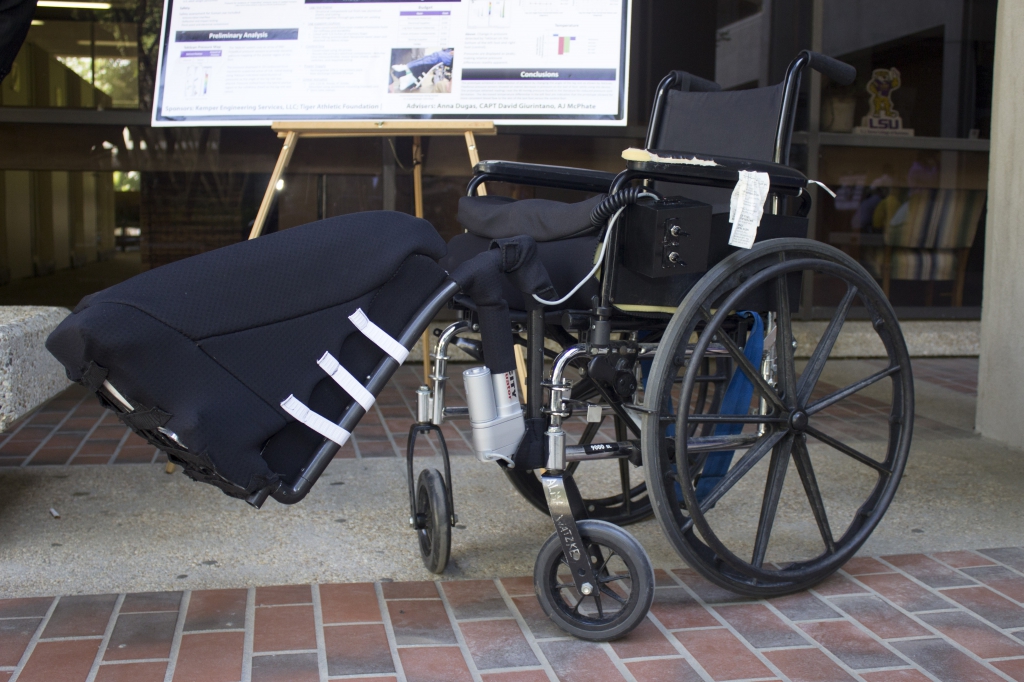LSU Engineering Seniors Design Wheelchair Prototype to Reduce Pressure Sores
May 9, 2014 | LSU Department of Mechanical & Industrial Engineering
When Amy Pinner’s father was diagnosed with kidney cancer and became paralyzed for two years until his death, she knew she wanted to make a difference in the lives of people with disabilities.

“I’ve dedicated my life to wanting to design better contraptions for paraplegics and quadriplegics,” said Pinner, LSU mechanical engineering senior.
Pinner teamed up with mechanical engineering seniors Paul Mathews and Stephen Montelepre and biological engineering senior Linda Cross to design a wheelchair prototype to reduce pressure sores as part of their LSU College of Engineering senior design project.
“Pressure sores are soft tissue injuries resulting from prolonged, unrelieved pressure applied to body surfaces, especially on bony prominences,” Cross explained. “The project goal is to design and test a device to decrease pressure sore formation over time on the feet and leg areas by redistributing and periodically altering contact forces.”
Pinner said the team spoke with many mobility-bound people to understand what problems they had with their wheelchairs. Many wheelchairs have pressure sore decreasing additions, but those only decrease sores in areas like the back and shoulder. According to their research and interviews, no wheelchair exists to decrease sores in the lower legs and feet.
“There’s a lot of technology for the seat or back of the chair, but not much for the footrest,” Pinner said.
Pressure sores affect about 11,000 people annually, and a great number of them must undergo amputation surgeries if the sore is infected. For some, pressure sores are even fatal. The team is determined to help make those lives easier.
“Our project will help advance technology for mobility-impaired individuals so that pressure sore incidences are reduced, and thus our project will decrease rates of infection and even amputation that can result from pressure sores,” Cross said.

Cross, who is also using this project as part of her LSU Honors College undergraduate thesis, is developing a testing device for the prototype to notify the person sitting in the wheelchair that a sore might be developing due to different factors like temperature and time at rest.
The team’s work was selected out of 5,000 applicants to an ASME competition for rehabilitation and assistive devices. They will travel to Boston in July to present the wheelchair and research to the World of Biomechanics.
But to Pinner, the biggest reward isn’t the recognition by ASME, but having the ability to actually better someone’s life.
“We can help them. We can help change lives,” she said. “This is what I became an engineer to do.”
###
Article by Danielle Kelley, LSU College of Engineering communications intern. For more information, contact Mimi LaValle, LSU College of Engineering, 225-578-5706, mlavall@lsu.edu.